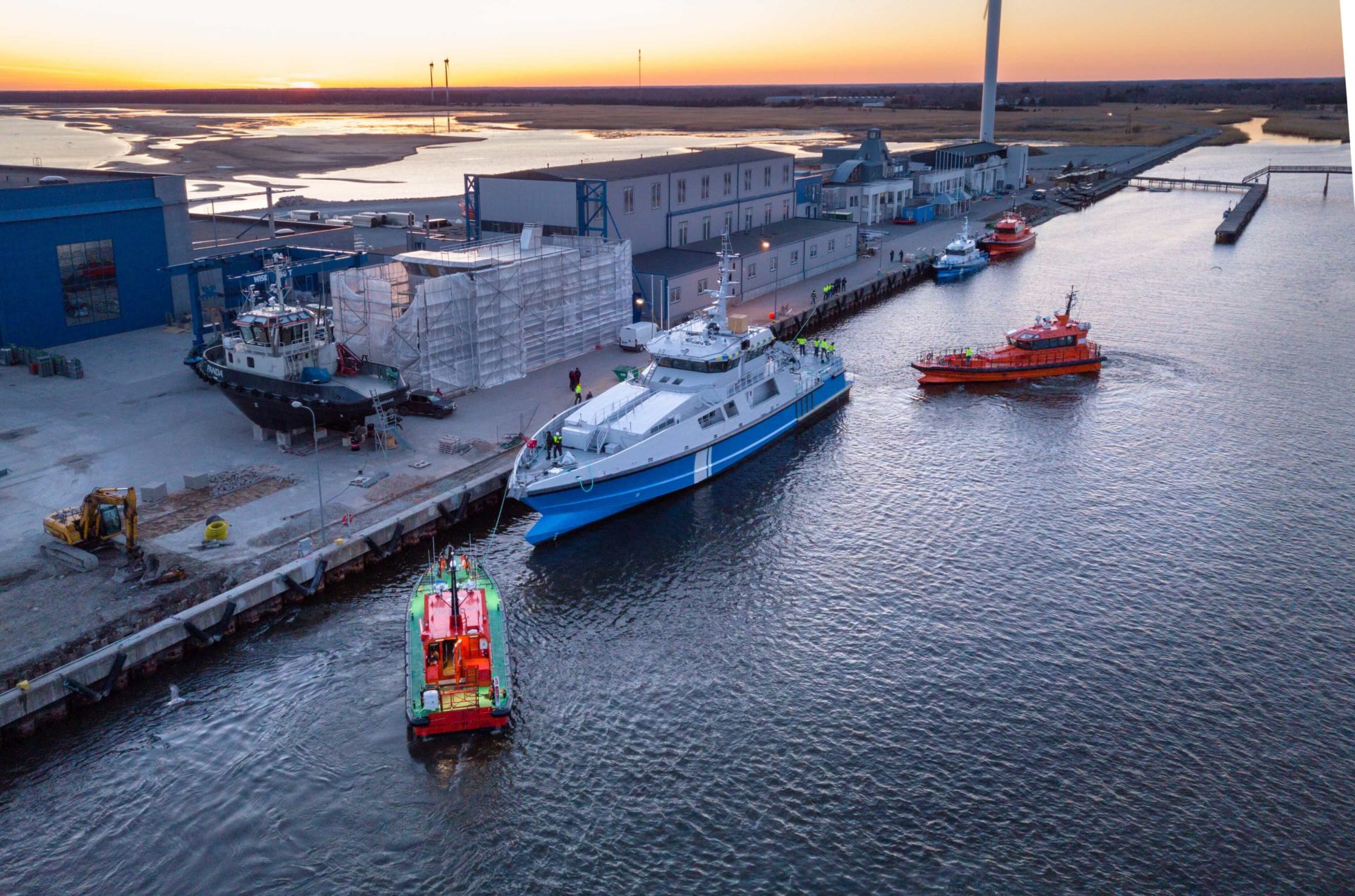GETTING THE JOB DONE, WHATEVER THE WEATHER
For pilot boats or patrol vessels used by police and border guards, bad weather and high seas are no excuse for not getting the job done. In response, Baltic Workboats launched a new hull concept that combined wave-piercing capabilities with a traditional high-speed bow and the smooth ride of a double-chine hull.
This new design approach for vessels operating in higher sea states has proven to be a huge success and numerous projects, including pilot, patrol and crew transfer vessels, have already taken advantage of the benefits the new hull form offers. The latest is the Patrol 4500 WP Hybrid, the first of its design.
Measuring almost 45 metres in length, this serious crime-fighting, search and rescue vessel, which is also equipped with systems for oil recovery, firefighting and maritime surveillance, will feature a complete sterngear package from CJR, including 1.80m five-blade propellers, 9.5m CNC machined F51 Duplex shafts, and all the necessary brackets and rudders – all designed and manufactured by CJR in Southampton.
Constructed in aluminium, the vessel is designed to respond quickly in an emergency, powered by twin MTU 16V4000 marine engines, which can propel it to a top speed of 27 knots; while its most economical cruising speed is designed to be around 13–16 knots, with a minimum range of 2,500 nautical miles. The vessel is being built to LR SSC patrol boat rules and will be capable of transporting up to 28 crew.
“There’s a real synergy between CJR and Baltic Workboats, we share the same values.”
Commenting on the announcement, Alex Stevens, technical sales manager for CJR, added: “There’s a real synergy between CJR and Baltic Workboats, we share the same values and this is reflected in the number of Baltic vessels equipped with our products, with more than 10 already delivered this year alone.
Baltic is very focused on quality and performance, and this mirrors our own priorities when it comes to developing precision propulsion and sterngear packages. These vessels are used all day, every day, so it is vital that performance and efficiency is maximised, whilst also minimising noise and vibration levels.
Our data-driven approach, utilising CFD to understand the impact that the hull form has on the water flow around the propellers and rudder, ensures the end result does exactly that – delivering a fast, smooth and highly efficient experience.”
